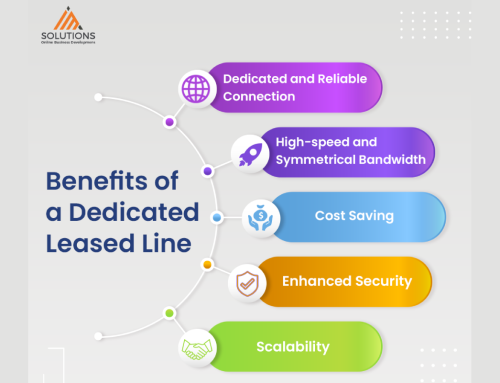VDSL, or Very High Bitrate Digital Subscriber Line, is a broadband technology that offers faster data transmission speeds over existing copper telephone lines, primarily used for residential and small business connections. VDSL leverages advanced modulation techniques to achieve higher data rates than traditional DSL.
On the other hand, a leased line refers to a dedicated, private communication line rented by a business or organization. Leased lines provide symmetrical and consistent high-speed connections, making them ideal for critical applications such as data centers, corporate networks, where reliability and low latency are paramount. Unlike VDSL, which shares infrastructure with other users, a leased line offers exclusive and predictable bandwidth, ensuring seamless and secure communication for demanding business operations.
Differences:
- Price
Obviously, this increase in speed comes with a price increase. Leased lines have a higher monthly cost than VDSL connection.
- Improved Up/Down Ratio
One of the aspects that makes leased lines ideal for business use is their improved up/down ratio. Whereas home users consume far more data than they upload, the same is not always true of businesses. Video calling, cloud services and data backup all require a healthy upload speed.
- Proactive Monitoring
Unlike commercial broadband, leased lines are monitored 24/7 for faults. This means that often, any connection problems have already been detected and fixed by your ISP before you would notice them.
- Lead Time for Installation
While VDSL can often be installed within 2 weeks, leased lines can take anywhere up to 60 days. So, if you are considering a leased line, make sure you leave enough time to install it before you need it to be operational.
- Downstream Speed
VDSL provides downstream speeds of 10-100 Mbps, while leased lines offer faster and dedicated two-way speeds ranging from 1 Mbps to 10 Gbps or more.
- Upstream Speed
VDSL has upload speeds of 1 to 40 Mbps, while a leased line gives you the same speed for uploading and downloading, which can be really fast, from 1 Mbps to 10 Gbps or even more.
- Bandwidth Control
VDSL’s bandwidth can be shared and change with usage, while leased lines offer dedicated and consistent bandwidth for better control.
- SLAs
Leased lines come with a Service Level Agreement. VDSL may not, particularly if you buy a consumer service. Generally, VDSL SLAs don’t offer any fixed time or latency guarantees, whereas some leased line SLAs routinely offer the former and sometimes offer the latter.
- Technical Support
VDSL connections have support with long waits and limited 24/7 availability. Its reactive users must report issues. Leased lines offer faster 24/7 support and proactive monitoring for downtime, even without customer reports.
- IP Addresses
VDSL connections tend to have a single dynamic IP address. Leased lines tend to offer static IP address ranges, i.e., an IP address that doesn’t keep changing and multiple IP addresses, not just one.
- Backup Connectivity Options
When getting a VDSL connection, backup options are seldom offered by ISPs. Leased line orders commonly include backup choices. These can range from lower-bandwidth options like FTTC or EFM for smaller leased lines, to separate leased lines or alternate networks for higher bandwidth lines.
- Upgradability
VDSL offers the highest stable speed of your line and upgrades involve switching technologies. Multiple VDSL connections can be combined for more speed. Leased lines are usually upgradable if the current speed is below the line’s potential. For instance, a 200Mbps leased line over a 1Gbps circuit can be upgraded without changing the connection.
- Connection Quality
Leased lines tend to be more stable than VDSL connections, as the latter are adversely impacted by electrical interference. Leased lines also tend to have lower latency, jitter, and packet loss than VDSL.
Finally, IM Solutions offers the best leased line prices in Egypt to businesses.







Leave A Comment
You must be logged in to post a comment.